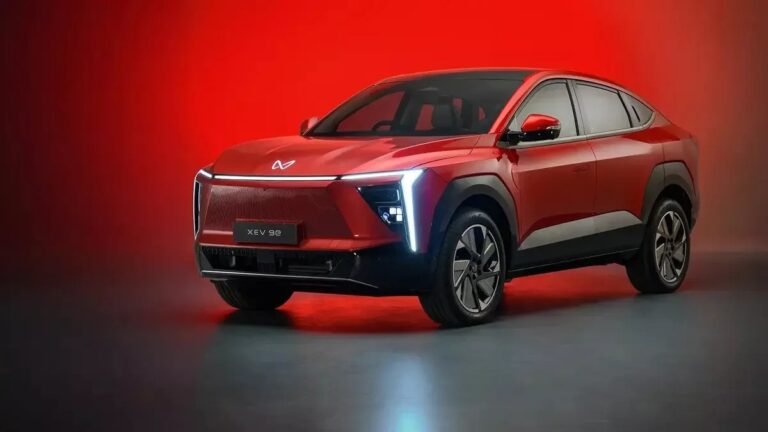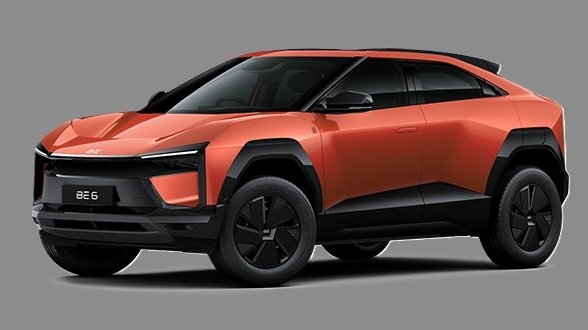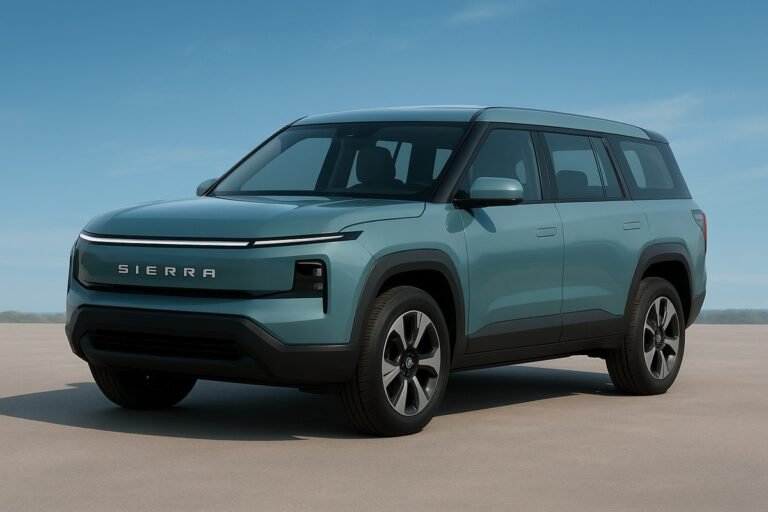
Tata Harrier EV vs Mahindra XUV 9e
Tata Harrier EV vs Mahindra XUV 9e The Battle of Indian EV Flagships
Tata Harrier EV vs Mahindra XUV 9e : India’s EV market is entering a new phase—beyond small city hatchbacks and scooters, we’re finally seeing larger electric SUVs ready to take on mainstream petrol and diesel rivals. Two of the most anticipated launches in this space are the Tata Harrier EV and the Mahindra XUV 9e (part of Mahindra’s “Born Electric” lineup).
Both promise cutting-edge tech, long range, and premium features, but they cater to slightly different visions of what an electric SUV should be.
1️⃣ Design & Styling Tata Harrier EV vs Mahindra XUV 9e
Tata Harrier EV
-
Tata has reworked the Harrier’s already bold design into a futuristic EV avatar.
-
It features a sealed grille with connected LED DRLs, sleeker headlamps, and a more aerodynamic bumper.
-
The side profile remains muscular, with signature Harrier proportions, but EV-specific alloy wheels and subtle blue accents hint at its electric nature.
-
The rear sports a full-width LED light bar for a high-tech look.
Mahindra XUV 9e
-
The XUV 9e is part of Mahindra’s all-new INGLO platform and is designed as an EV from the ground up—not a conversion of an existing ICE model.
-
Expect a sleek, coupe-like silhouette, aggressive stance, and futuristic elements like flush door handles and large aero wheels.
-
Interior styling (based on concepts) will be tech-heavy with twin screens, sustainable materials, and a very minimalistic dashboard.
✅ Verdict:
The Harrier EV stays closer to its rugged SUV roots with an “evolved” look, while the XUV 9e feels like a clean-slate EV concept turned real. Style preference will depend on whether you like familiar SUV toughness (Harrier) or futuristic sleekness (XUV 9e).
2️⃣ Platform & Technology
-
Harrier EV: Based on Tata’s Gen 2 EV architecture—an adaptation of the OMEGA ARC platform that underpins the diesel Harrier. While not ground-up, it’s heavily re-engineered for EV use.
-
XUV 9e: Built on Mahindra’s INGLO skateboard platform, shared with future Mahindra EVs. This platform supports 800V architecture and is optimized for EV efficiency and packaging.
✅ Verdict:
XUV 9e has the advantage of being a dedicated EV platform, which may translate to better space, efficiency, and tech integration.
3️⃣ Battery & Range Tata Harrier EV vs Mahindra XUV 9e
-
Tata Harrier EV: Expected with 60–80 kWh battery packs, offering range of 400–500 km (ARAI figure). Will feature dual-motor AWD on higher trims.
-
Mahindra XUV 9e: Promised with 60–80 kWh batteries too, but Mahindra’s INGLO platform supports fast charging up to 175 kW, which could deliver 450–500 km range and faster DC charging.
✅ Verdict:
Likely a tie on range, but the XUV 9e might charge faster due to its advanced architecture.
4️⃣ Performance
-
Harrier EV: Dual-motor AWD setup will provide instant torque and better traction. Tata hasn’t revealed exact power figures yet, but estimates suggest 220–250 hp.
-
XUV 9e: Being a ground-up EV, Mahindra is aiming higher—reports suggest 230–280 hp, potentially making it quicker off the line than the Harrier EV.
✅ Verdict:
The XUV 9e may hold the performance edge, especially if Mahindra tunes it for sportier driving.
5️⃣ Features & Interior
Harrier EV
-
Expected to carry over the new Harrier facelift’s cabin: large 12.3-inch touchscreen, 10.25-inch digital cluster, ADAS Level 2, panoramic sunroof, ventilated seats.
-
EV-exclusive touches like ambient lighting themes, EV drive modes, and regen controls will be added.
XUV 9e
-
Based on concepts, expect dual widescreen displays, a futuristic cabin layout, sustainable materials (vegan leather, recycled plastics).
-
Will feature ADAS Level 2 or 2+, AR-based navigation, and connected tech suite.
✅ Verdict:
Harrier EV will feel familiar and plush, while XUV 9e might wow tech lovers with its concept-car interior.
6️⃣ Pricing & Positioning
-
Tata Harrier EV: Expected launch price ₹28–32 lakh (ex-showroom). Positioned as a premium EV SUV but still grounded in Tata’s accessible pricing philosophy.
-
Mahindra XUV 9e: Will likely start ₹30–35 lakh (ex-showroom) and sit slightly above Harrier EV as a more “luxury” EV SUV.
✅ Verdict:
Harrier EV will probably be slightly more affordable, giving it broader appeal.
7️⃣ Brand & Ecosystem Tata Harrier EV vs Mahindra XUV 9e
-
Tata is currently India’s EV leader with Nexon EV, Tiago EV, and Punch EV already on roads. That gives Harrier EV an ecosystem advantage: service readiness, charging network partnerships, and brand trust.
-
Mahindra is entering the EV SUV game with big ambitions, but the XUV 9e will be their first real test.
✅ Verdict:
Tata has a proven EV track record—a confidence boost for buyers.
Final Take: Which One Should You Watch?
-
Tata Harrier EV is the safe, reliable choice—a proven SUV turned EV, backed by Tata’s EV dominance.
-
Mahindra XUV 9e is the bold, futuristic option—a true ground-up EV designed to impress with its tech and style.
👉 If you value rugged SUV feel, lower entry price, and Tata’s EV trust, the Harrier EV will make more sense.
👉 If you want next-gen EV architecture, cutting-edge tech, and are okay paying a bit more, the XUV 9e might be worth the wait.
Last Updated On 28 July 2025.
See more: Tata Zest vs Hyundai Xcent: Which Compact Sedan Offers Better Value?





